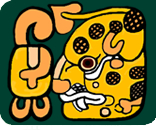About Xela
Quetzaltenango may well be the perfect Guatemalan town – not too big, not too small, enough foreigners to support a good range of hotels and restaurants, but not so many that it loses its national flavor. The Guatemalan 'layering' effect is at work in the city center – once the Spanish moved out, the Germans moved in and their architecture gives the zone a somber, even Gothic, feel.
Quetzaltenango is big, like its name – which the locals kindly shorten to Xela (shell-ah), itself an abbreviation of the original Quiché Maya name, Xelajú – but by Guatemalan standards, it is an orderly, clean and safe city. It tends to attract a more serious type of traveler – people who really want to learn Spanish and then stay around and get involved in the myriad volunteer projects on offer.
Xela also functions as a base for a range of spectacular hikes through the surrounding countryside – the ascent to the summit of Volcán Tajumulco (Central America's highest point) and the three-day trek to Lago de Atitlán, to name a few. Quetzaltenango came under the sway of the K'iche' Maya of K'umarcaaj when they began their great expansion in the 14th century. Before that it had been a Mam Maya town. It was near here that the K'iche' leader Tecún Umán was defeated and killed by the Spanish conquistador Pedro de Alvarado in 1524.
The town prospered in the late-19th-century coffee boom, with brokers opening warehouses and finca (plantation) owners coming to town to buy supplies. (Fans of urban decay will appreciate the abundance of unrestored structures still standing from that period.) This boom busted when a combined earthquake and eruption of Santa María in 1902 wreaked mass destruction. Still, the city's position at the intersection of roads to the Pacific Slope, Mexico and Guatemala City guaranteed it some degree of prosperity. Today it's again busy with commerce, of the indigenous, foreign and ladino varieties.
Any questions? Contact us or register now!

